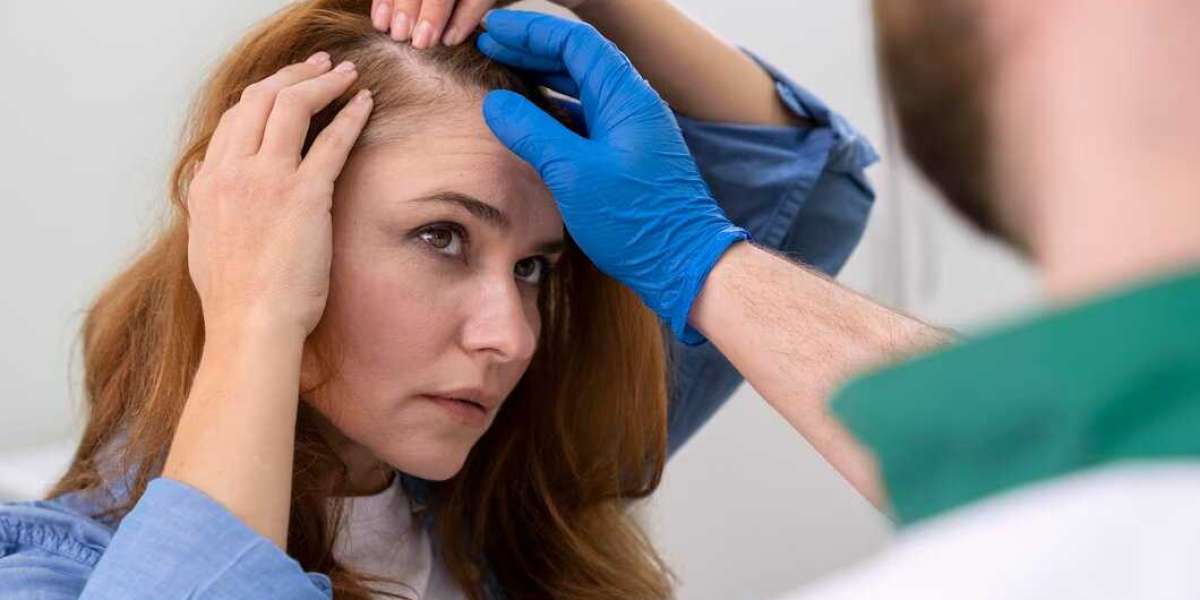Understanding Hair Transplantation
Hair transplantation is a surgical procedure designed to address hair loss by relocating healthy hair follicles from one area of the body to another, typically from the back or sides of the scalp (donor area) to areas with thinning or no hair (recipient area). The procedure is a delicate balance of medical science and artistic skill, ensuring both natural-looking results and the restoration of self-confidence.
Step-by-Step Guide to the Hair Transplantation Procedure
Initial Consultation: The journey begins with a thorough consultation with a qualified hair transplant surgeon. During this session, the surgeon evaluates the patient's hair loss pattern, discusses goals and expectations, and customizes a treatment plan tailored to the individual's needs.
Anesthesia: Local anesthesia is administered to numb the donor and recipient areas. This ensures a comfortable experience for the patient during the procedure.
Graft Extraction (FUE Technique): In the Follicular Unit Extraction (FUE) technique, individual hair follicles are carefully extracted using specialized instruments. This minimally invasive method leaves tiny, virtually undetectable scars, making it a preferred choice for many patients.
Graft Preparation: Extracted follicles are meticulously examined and prepared for transplantation. This step involves separating and sorting the grafts based on size and quality.
Recipient Site Creation: The surgeon creates tiny, precise incisions or channels in the recipient area. The angle, direction, and density of these sites are crucial in achieving a natural and aesthetically pleasing result.
Graft Placement: Each graft is delicately placed into the recipient sites. The surgeon's expertise comes into play here, as proper placement ensures a seamless integration with existing hair and a harmonious hairline.
Post-Procedure Care: After the procedure, patients are given instructions on how to care for their newly transplanted hair. This may include guidelines for washing, medication, and follow-up appointments.
Recovery and Results
Following the hair transplantation procedure, patients may experience minor discomfort, swelling, and scabbing, which typically subside within a few days. The transplanted hair will shed within a couple of weeks, but this is a normal part of the process. New hair growth gradually begins within a few months and continues to improve in texture and density over time.
Benefits of Hair Transplantation
Permanent Solution: Hair transplantation offers a lasting solution, as transplanted hair is resistant to the factors that cause hair loss.
Natural Appearance: The meticulous placement of grafts results in a natural-looking hairline and overall appearance, enhancing the patient's appearance without an obvious "transplanted" look.
Boosted Self-Confidence: As the transplanted hair grows, patients often experience a significant improvement in self-esteem and self-image.
Minimal Downtime: The recovery period is relatively short, allowing patients to resume their regular activities within a short span of time.
The hair transplantation procedure represents a harmonious blend of scientific innovation and artistic craftsmanship. As patients embark on this transformative journey, they are not only restoring lost hair but also reclaiming a sense of confidence and well-being. With advancements in technology and surgical techniques, hair transplantation in Indore continues to be a beacon of hope for individuals seeking to overcome the challenges of hair loss and step into a future marked by renewed self-assurance and pride.



